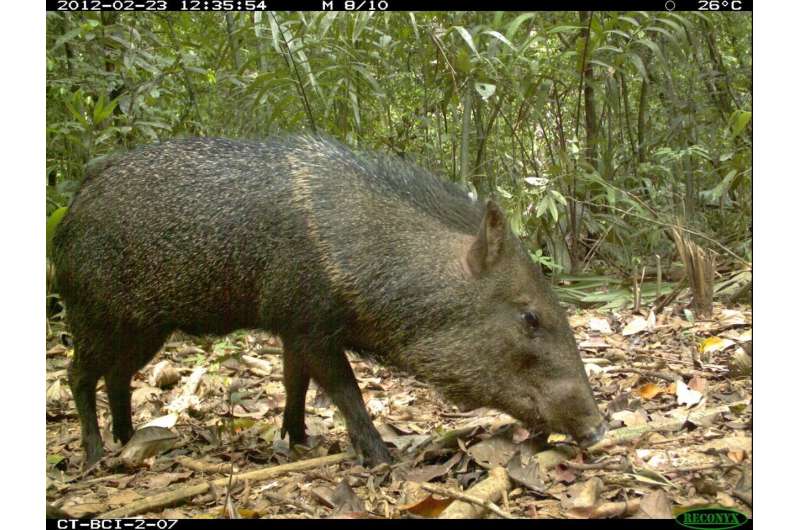More than two million photos provide important insight into mammal behavior

Most of us are active in the day and sleep at night. We favor daylight while darkness poses constraint. Animals too have to balance their use of time to their requirements and constraints: finding food, avoiding predators, socializing and staying warm without overheating.
In a new study in Nature Communications an international team of researchers explored if there were consistent patterns across sites and regions regarding how different animals use their day.
Professor Douglas Sheil from Wageningen University & Research who helps lead the project explained the idea: "At first sight the faunas of different tropical regions are distinct. There are no gorillas or elephants in the tropical forests of the Americas, no tapirs in Africa and no armadillos in Asia. This is the result of the detailed histories of species exchange, isolation and evolution within each region.
"But if we look deeper and consider how each of these animals make their living there may be similarities hidden within the differences: for example, each region has a range of species of different sizes that feed on plants, insects and other animals. How deep do similarities go if we consider how animals use time? For example, might coexisting species result in similar tendencies to prefer day or night-time activity according to the needs and constraints that act upon them?"
More than two million pictures
"Our eyes in the forest are the many camera-traps that permit us to know when even the most secretive animals are active. Thanks to the more than 2.3 million pictures collected by the Tropical Ecology Assessment and Monitoring (TEAM) Network, we studied the activity of mammals in 16 protected areas across regions," says lead author Andrea Vallejo Vargas, from the Norwegian University of Life Science.
"We used the time when 166 species were recorded to examine if feeding needs and size influence when each species is more or less active. We compared these patterns among continents and how these conform to prevailing theories."
Consistent daily activity
The study revealed consistent daily activity of tropical mammals among continents depending on the body size and their feeding needs. Large species that consume fruits, or leaves and insects (except in the Neotropics in Middle and South America) are more likely to be active during the night than smaller species. The researchers found that the increase of nocturnal activity correlates with an increase of body size respond to temperature.
In contrast, large carnivores and omnivores are more likely to be active during the day than smaller species of these that share similar feeding requirements. It appeared that interactions are the key factor in shaping the activity of carnivores, and omnivores.
Insectivores were the one exception where the pattern differed across continents: larger species were more likely to be active in the day in the Americas while the reverse was true in Africa and Asia. The reasons are unclear but the behavior of neotropical insectivores reflect very different needs to those that evolved elsewhere. This likely arises from the long evolutionary isolation of the South American continent.
In addition, the researchers found that the behavior of predators and prey influence each other. Notably top-predators follow activity patterns that match their prey. This impacts also on other species.
Aside from being fascinating in itself, it is valuable to know how natural and near-natural communities behave and interact so that we have a reference for exploring such patterns in less pristine sites. For example, we know little about the impacts of human activities such as hunting or the presence of artificial light as well as in communities where certain species, such as the large carnivores, are now rare or absent. Such explorations will be the subject of future research.
More information: Andrea F. Vallejo-Vargas et al, Consistent diel activity patterns of forest mammals among tropical regions, Nature Communications (2022). DOI: 10.1038/s41467-022-34825-1
Journal information: Nature Communications
Provided by Wageningen University



















